The compact SUV segment is booming, and two contenders that stand out prominently are the BMW X1 and the Kia Sportage. Both vehicles boast a blend of functionality, style, and a plethora of modern features that cater to the needs of today’s drivers. In this article, we’ll take a closer look at how these two models compare in terms of technical aspects and innovations.
BMW X1 vs Kia Sportage – Performance, range & efficiency compared
Both models have their strengths – but which one suits you more?
Compare performance, efficiency, price and space directly: BMW X1 or Kia Sportage?
Powertrains and Performance
The BMW X1 offers a diverse lineup of powertrains, ranging from efficient petrol and diesel engines to plug-in hybrids. The engines provide performance outputs ranging from 150 to 326 horsepower, with the high-performance variant achieving a 0-100 km/h time of just 5.4 seconds. In terms of fuel consumption, the X1 is commendable, with figures as low as 4.6 L/100km for diesel variants. Additionally, the option of diesel mild-hybrid engines improves both efficiency and torque response, making it a strong contender for those who value performance alongside practicality.
On the other hand, the Kia Sportage also impresses with its variety of engine options, including mild hybrids, full hybrids, and plug-in hybrids. With power outputs ranging from 136 to 252 horsepower, the Sportage's most potent engine can achieve a 0-100 km/h time of 8.3 seconds. Fuel efficiency is also competitive, with hybrids delivering consumption figures of around 5.6 L/100km. The Sportage is notably well-suited for those who prioritize eco-friendliness without sacrificing performance.
Transmission and Drive Options
The BMW X1 comes with a smooth automatic transmission as standard, ensuring a seamless driving experience whether you're navigating urban streets or cruising on the highway. The availability of both front-wheel and all-wheel drive enhances its versatility, catering to various driving conditions.
Similarly, the Kia Sportage offers a choice between manual and automatic transmissions, allowing a degree of customization depending on driver preference. The Sportage also provides front-wheel drive and all-wheel drive options, making it a suitable choice for those who often encounter varying road conditions.
Interior Space and Comfort
Both SUVs emphasize comfort with spacious interiors designed for five passengers. The BMW X1 provides a trunk capacity ranging from 490 to 540 liters, depending on the variant. Its high-quality interior materials and ergonomic design contribute to a premium feel that is expected from the BMW brand.
The Kia Sportage narrowly surpasses the X1 in trunk space with capacities up to 587 liters, making it a practical choice for families or those who frequently carry substantial cargo. Kia's modern design language and tech-savvy features also enhance the overall driving experience, with thoughtful touches that prioritize passenger comfort.
Innovative Features and Technology
In today's automotive landscape, technology is a significant differentiator. The BMW X1 is equipped with the latest iDrive system, featuring a high-resolution display, advanced navigation, and seamless smartphone integration. The suite of safety features includes lane-keeping assist, adaptive cruise control, and parking assistance, setting a high standard in vehicle safety and convenience.
On the flip side, the Kia Sportage boasts an impressive array of technology, including a user-friendly infotainment system with enhanced connectivity features. The inclusion of advanced driver-assistance systems, like highway driving assist and forward collision-avoidance assist, underscores Kia's commitment to providing a safe driving environment.
Conclusion: Which SUV Reigns Supreme?
When comparing the BMW X1 and Kia Sportage, prospective buyers will find that both vehicles excel in their own right. The X1’s performance-driven approach, luxurious interior, and BMW’s reputation for quality make it a favorite among enthusiasts. Meanwhile, the Kia Sportage stands out with its practicality, spaciousness, and advanced technology, offering fantastic value for the money.
Ultimately, the choice between the two boils down to individual preferences and requirements. For those prioritizing performance and luxury, the BMW X1 may be the optimal choice. Conversely, for consumers looking for economy and practicality, the Kia Sportage presents itself as an excellent option. Regardless of your choice, both SUVs are leading contenders in the compact segment.
Here’s where it gets real: The technical differences in detail
Costs and Efficiency:
When it comes to price and running costs, the biggest differences usually appear. This is often where you see which car fits your budget better in the long run.
Kia Sportage has a noticeable advantage in terms of price – it starts at 30200 £, while the BMW X1 costs 38200 £. That’s a price difference of around 8066 £.
Fuel consumption also shows a difference: BMW X1 manages with 2.50 L and is therefore decisively more efficient than the Kia Sportage with 5 L. The difference is about 2.50 L per 100 km.
Engine and Performance:
Power, torque and acceleration say a lot about how a car feels on the road. This is where you see which model delivers more driving dynamics.
When it comes to engine power, the BMW X1 has a noticeable edge – offering 326 HP compared to 239 HP. That’s roughly 87 HP more horsepower.
In acceleration from 0 to 100 km/h, the BMW X1 is significantly quicker – completing the sprint in 5.40 s, while the Kia Sportage takes 7.90 s. That’s about 2.50 s faster.
In terms of top speed, the BMW X1 performs slightly better – reaching 250 km/h, while the Kia Sportage tops out at 203 km/h. The difference is around 47 km/h.
There’s also a difference in torque: BMW X1 pulls clearly perceptible stronger with 477 Nm compared to 320 Nm. That’s about 157 Nm difference.
Space and Everyday Use:
Whether family car or daily driver – which one offers more room, flexibility and comfort?
Both vehicles offer seating for 5 people.
In curb weight, Kia Sportage is hardly perceptible lighter – 1552 kg compared to 1575 kg. The difference is around 23 kg.
In terms of boot space, the Kia Sportage offers hardly perceptible more room – 587 L compared to 540 L. That’s a difference of about 47 L.
In maximum load capacity, the Kia Sportage performs slight better – up to 1776 L, which is about 176 L more than the BMW X1.
When it comes to payload, Kia Sportage to a small extent takes the win – 580 kg compared to 500 kg. That’s a difference of about 80 kg.
Who wins the race?
The BMW X1 proves to be leaves the rival little chance and therefore becomes our DriveDuel Champion!
BMW X1 is the better all-rounder in this comparison.
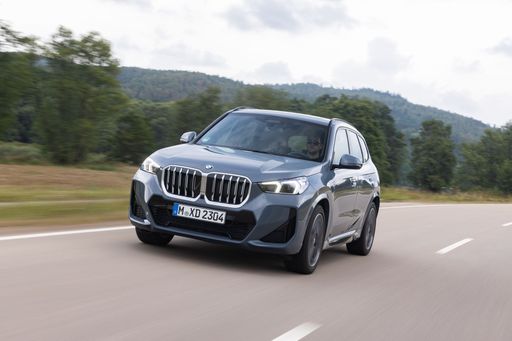 @ BMW Group Press
@ BMW Group Press
BMW X1
BMW X1
The BMW X1 brings a premium feel to compact crossover life, wrapping practical space and agile handling into a tidy, upscale package. It’s ideal for buyers who want BMW driving dynamics without the bulk, offering everyday comfort and a few clever tricks to keep the commute interesting.
details @ BMW Group Press
@ BMW Group Press
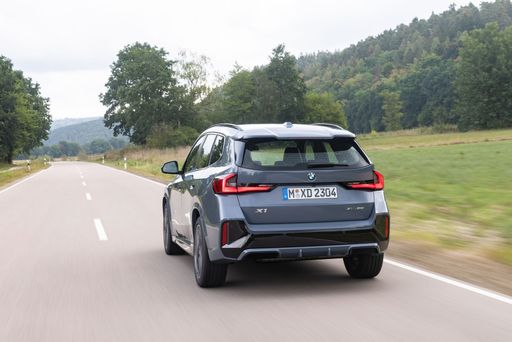 @ BMW Group Press
@ BMW Group Press
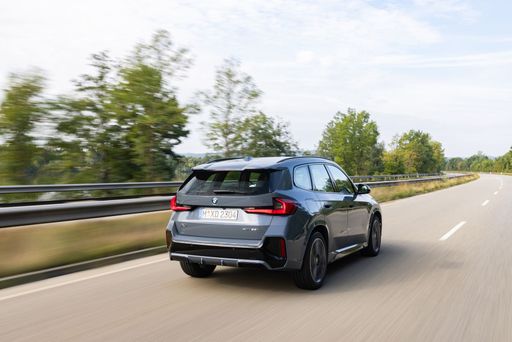 @ BMW Group Press
@ BMW Group Press
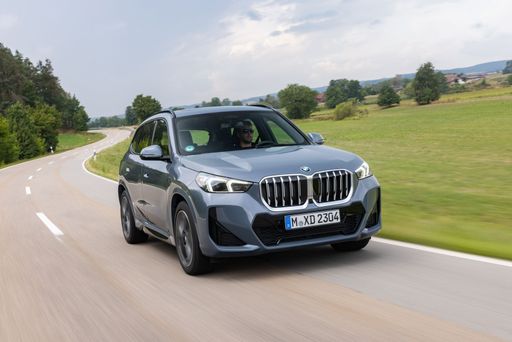 @ BMW Group Press
@ BMW Group Press
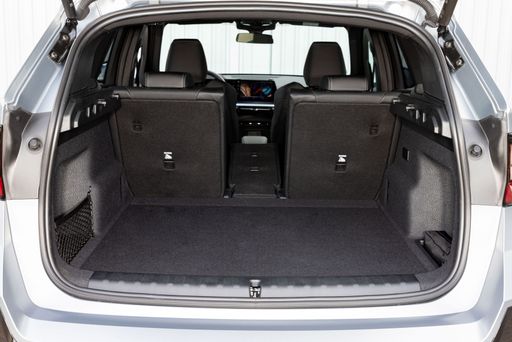 @ BMW Group Press
@ BMW Group Press
Kia Sportage
The Kia Sportage proves you don't have to choose between style and sensible family motoring, wrapping modern, confident looks around a roomy, well-equipped cabin. It's an easy car to live with — comfortable on daily runs, pleasantly engaging when you want a bit of fun, and kind to your wallet so you can keep smiling at the fuel pump.
details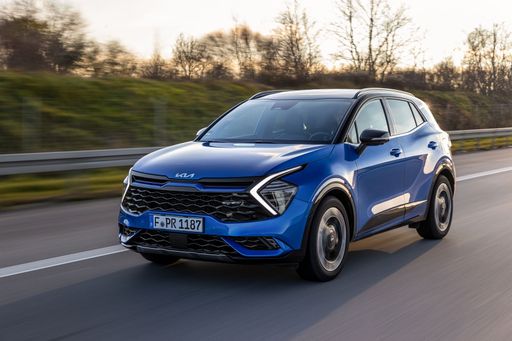 @ Kia Corporation
@ Kia Corporation
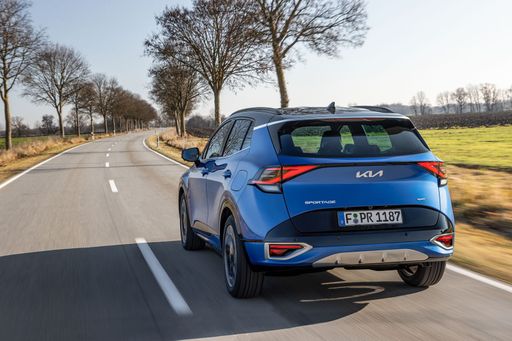 @ Kia Corporation
@ Kia Corporation
 @ Kia Corporation
@ Kia Corporation
 @ Kia Corporation
@ Kia Corporation
 @ BMW Group Press
@ BMW Group Press
|
 @ Kia Corporation
@ Kia Corporation
|
|
|
|
Costs and Consumption |
|
|---|---|
|
Price
38200 - 55500 £
|
Price
30200 - 43900 £
|
|
Consumption L/100km
2.5 - 7.7 L
|
Consumption L/100km
5 - 7.9 L
|
|
Consumption kWh/100km
-
|
Consumption kWh/100km
-
|
|
Electric Range
81 km
|
Electric Range
-
|
|
Battery Capacity
14.20 kWh
|
Battery Capacity
-
|
|
co2
57 - 175 g/km
|
co2
132 - 180 g/km
|
|
Fuel tank capacity
47 - 54 L
|
Fuel tank capacity
52 - 54 L
|
Dimensions and Body |
|
|---|---|
|
Body Type
SUV
|
Body Type
SUV
|
|
Seats
5
|
Seats
5
|
|
Doors
5
|
Doors
5
|
|
Curb weight
1575 - 1935 kg
|
Curb weight
1552 - 1733 kg
|
|
Trunk capacity
490 - 540 L
|
Trunk capacity
526 - 587 L
|
|
Length
4500 - 4505 mm
|
Length
4540 mm
|
|
Width
1845 mm
|
Width
1865 mm
|
|
Height
1622 - 1642 mm
|
Height
1645 mm
|
|
Max trunk capacity
1495 - 1600 L
|
Max trunk capacity
1715 - 1776 L
|
|
Payload
490 - 500 kg
|
Payload
543 - 580 kg
|
Engine and Performance |
|
|---|---|
|
Engine Type
Diesel MHEV, Petrol MHEV, Petrol, Diesel, Plugin Hybrid
|
Engine Type
Petrol, Full Hybrid, Diesel MHEV
|
|
Transmission
Automatic
|
Transmission
Manuel, Automatic
|
|
Transmission Detail
Dual-Clutch Automatic
|
Transmission Detail
Manual Gearbox, Dual-Clutch Automatic, Automatic Gearbox
|
|
Drive Type
Front-Wheel Drive, All-Wheel Drive
|
Drive Type
Front-Wheel Drive, All-Wheel Drive
|
|
Power HP
136 - 326 HP
|
Power HP
136 - 239 HP
|
|
Acceleration 0-100km/h
5.4 - 9.2 s
|
Acceleration 0-100km/h
7.9 - 11.6 s
|
|
Max Speed
190 - 250 km/h
|
Max Speed
180 - 203 km/h
|
|
Torque
230 - 477 Nm
|
Torque
250 - 320 Nm
|
|
Number of Cylinders
3 - 4
|
Number of Cylinders
4
|
|
Power kW
100 - 240 kW
|
Power kW
100 - 176 kW
|
|
Engine capacity
1499 - 1998 cm3
|
Engine capacity
1598 cm3
|
General |
|
|---|---|
|
Model Year
2024 - 2025
|
Model Year
2025
|
|
CO2 Efficiency Class
D, E, F, B
|
CO2 Efficiency Class
F, D, E, G
|
|
Brand
BMW
|
Brand
Kia
|
Is the BMW X1 offered with different drivetrains?
The BMW X1 is offered with Front-Wheel Drive or All-Wheel Drive.
The prices and data displayed are estimates based on German list prices and may vary by country. This information is not legally binding.
